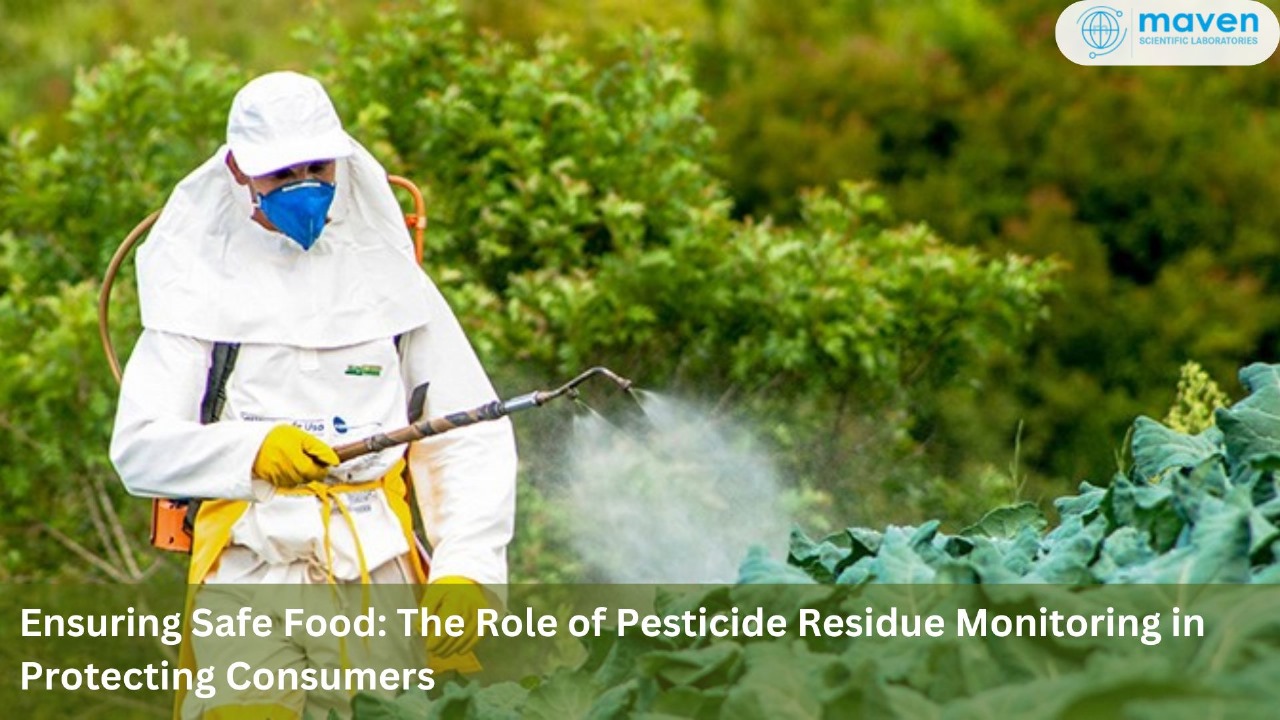
Ensuring Safe Food: The Role Of Pesticide Residue Monitoring In Protecting Consumers
Pesticide residues in food are a significant concern for public health, which is why the U.S. has strict regulations in place to monitor and control pesticide levels in food. Several federal agencies, including the Environmental Protection Agency (EPA), Food and Drug Administration (FDA), and U.S. Department of Agriculture (USDA), work together to regulate pesticide use in agriculture and ensure that food products are safe for consumers. These efforts are governed by laws such as the Federal Insecticide, Fungicide, and Rodenticide Act (FIFRA) and the Federal Food, Drug, and Cosmetic Act (FFDCA). This blog will explore how these agencies work together to monitor pesticide residues in food, focusing on the regulations, key guidelines, and monitoring programs that ensure our food supply remains safe.
Regulatory Framework for Pesticide Residue in Food
1. FIFRA & FFDCA: The Legal Foundation
The EPA plays a critical role in ensuring food safety by setting maximum pesticide residue limits (tolerances) under FIFRA. These tolerances apply to both domestic and imported food products, making it necessary for the EPA to review and approve pesticide use on crops. The FFDCA grants the FDA the authority to enforce these tolerances for food products in interstate commerce, ensuring consumers are not exposed to harmful pesticide levels.
2. FDA and USDA Enforcement
While the EPA sets pesticide residue limits, the USDA and FDA are responsible for enforcing them:
- USDA: Enforces pesticide standards for meat and poultry products.
- FDA: Oversees pesticide residue enforcement for other foods, including fruits, vegetables, and processed foods. The FDA also monitors both domestic and imported foods to ensure they comply with safety standards.
FDA’s Pesticide Residue Monitoring Program
The FDA’s pesticide residue monitoring program is essential in detecting and addressing violations in the food supply. The program targets foods of dietary significance—those most commonly consumed by the U.S. population and foods that may pose greater risks to vulnerable groups such as infants and young children.
A. Domestic Food Monitoring
For domestic foods, the FDA follows a regulatory approach, focusing on intelligence gathering, selective sampling, and aggressive follow-up actions. The FDA targets products with a history of pesticide violations and uses intelligence to focus resources on higher-risk foods. The program prioritizes foods that are staples in the U.S. diet, including fruits, vegetables, and grains.
B. Imported Food Monitoring
Given the high volume of food imports, the FDA also monitors imported foods to ensure they meet U.S. pesticide standards. The FDA uses several tools:
- OASIS Database: A system that tracks the volume and types of foods being imported, helping to identify products with higher risks of pesticide contamination.
- Import Alerts: Alerts like IA 99-05 (automatic detention of raw agricultural products) and IA 99-08 (detention of processed foods without physical examination) help prevent non-compliant foods from entering the U.S. market.
Monitoring Strategy and Sampling Guidelines
The FDA’s surveillance strategy is based on selective sampling, focusing on high-risk foods that are likely to contain pesticide residues. The sampling guidance is periodically updated to address emerging risks and ensure effective monitoring. The focus remains on foods that make up a significant part of the U.S. diet, with special attention given to foods consumed by infants and children.
Transparency and Public Access to Data
The FDA’s Office of Food Safety annually compiles data from its monitoring efforts, providing a detailed report on pesticide residue levels found in food. This information is shared with the public through the FDA’s Centre for Food Safety and Applied Nutrition (CFSAN) website. The annual Residue Report offers insights into pesticide residues in the food supply, informing stakeholders such as the EPA, USDA, Congress, and consumers.
How Maven Services Play a Key Role in Pesticide Residue Monitoring
Maven Scientific Laboratories plays a crucial role in supporting the regulatory framework for pesticide residue monitoring. As a leader in toxicological risk assessments and regulatory compliance, Maven offers specialized services that help agricultural producers, food manufacturers, and regulatory bodies ensure their products meet the stringent standards set by the EPA, FDA, and USDA.
Here’s how Maven contributes:
- Comprehensive Toxicological Risk Assessments (TRA): Maven provides expert assessments of pesticide residues in food products. By evaluating the safety of pesticides used in agriculture, Maven helps identify potential health risks associated with pesticide exposure. This supports the industry in ensuring their products are within safe tolerance limits and comply with regulatory standards.
- Regulatory Gap Analysis and Compliance: Maven assists companies by performing in-depth regulatory gap analyses to ensure compliance with domestic and international pesticide residue regulations. Their expertise helps close gaps in safety data, labelling, and formulation, making it easier for companies to navigate complex regulatory landscapes and bring safe products to market.
- Testing and Analytical Services: Maven’s state-of-the-art laboratories conduct essential testing to detect pesticide residues, ensuring that products meet the safety standards required by global regulatory authorities. This testing includes both qualitative and quantitative analysis of pesticide levels in agricultural commodities and food products, providing accurate results that inform decision-making.
- Customized Solutions for Food Safety: Maven tailors its testing and risk assessment services to meet the specific needs of clients, ensuring that food products are safe for consumption and compliant with regulations. This includes monitoring emerging risks, such as new pesticides or practices, and ensuring that these are accounted for in safety assessments.
- Support for International Market Entry: Maven’s global expertise helps companies meet regulatory requirements across different regions. Whether for food products entering the EU, US, or Asia, Maven provides guidance and testing services to ensure compliance with each region’s pesticide residue standards, facilitating smooth market entry.
Conclusion
Pesticide residue monitoring is essential in maintaining the safety of the U.S. food supply. The combined efforts of the EPA, FDA, and USDA ensure that pesticide residues are kept within safe limits, protecting consumers from potential health risks. Through a comprehensive monitoring program, the FDA targets both domestic and imported foods, ensuring compliance with pesticide residue standards. With continued updates to monitoring guidelines, the FDA remains vigilant in protecting public health, particularly for vulnerable populations like infants and young children.
In this regulatory landscape, Maven plays a vital role by offering expert toxicological assessments, regulatory guidance, and precise testing services. By partnering with Maven, companies can ensure that their products meet all necessary safety standards, facilitating consumer confidence and regulatory compliance. With Maven's support, the path to safe, pesticide-free food becomes clearer and more accessible.







